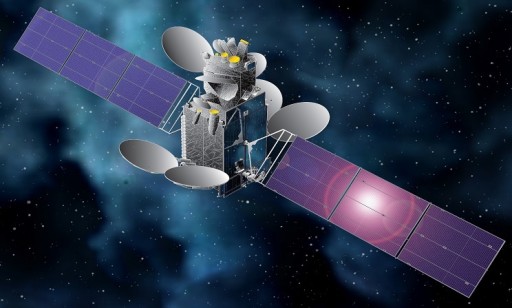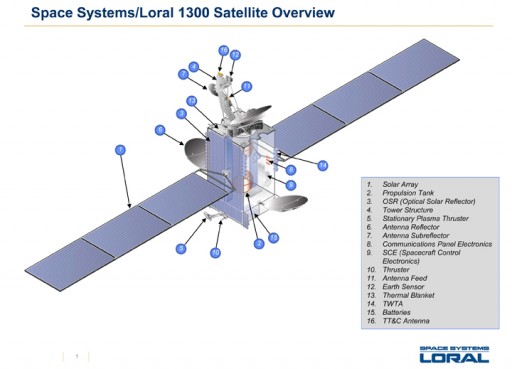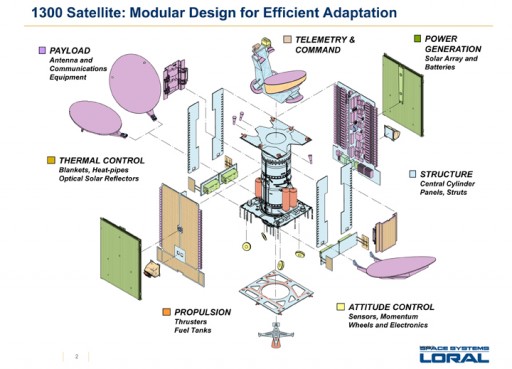JCSat-14 Satellite Overview

JCSat-14 is a commercial communications satellite built by Space Systems/Loral and operated by SKY Perfect JSAT Corporation based in Japan. The spacecraft replaces the JCSAT-2A satellite at 154°E launched in 2002 and is approaching the end of its 15-year service life.
The JCSat-14 spacecraft was manufactured by SS/L at its Palo Alto, California facility using the flight-proven LS-1300 satellite platform as a basis. It is the 102nd LS-1300 satellite to be delivered by SS/L.
LS-1300 is a flexible satellite platform that can be flown in different configurations to accommodate different communication payloads with a total power of 5 to 18kW. Using different configurations, LS-1300 satellites can weigh from 2,200 up to 6,700 Kilograms featuring payloads of 12 to 150 transponders. Through optimizations, the number of transponders that can be accommodated can be increased even further. LS-1300 was introduced in the late 1980s, but undergoes constant modifications going through a number of revisions over the years.

JCSat-14 uses the medium-power variant of LS-1300, featuring two three-panel solar arrays that deliver around 10kW power to a dedicated system that conditions the satellite’s power bus and controls the state of charge of the vehicle’s batteries. Three-axis stabilization and navigation is accomplished by state of the art navigation sensors and reaction wheels.
The satellite is equipped with a chemical propulsion system for orbit-raising and stationkeeping using a main apogee engine and a series of attitude control thrusters. LS-1300 also provides the option of an additional electric propulsion system, whether this option is exercised for JCSat-14 is not known. The spacecraft is expected to operate for at least 15 years.
JCSat-14 is outfitted with 26 C-Band and 18 Ku-Band transponders to deliver flexible communications coverage to a wide area over Asia and the Pacific Ocean.

The Ku-Band system will service customers in Asia, Russia, Oceania and the Pacific Islands. These services include high-speed connectivity for maritime, aviation and resource exploration users. Spotbeam Ku coverage over Japan and the Asia-Pacific region will enable high-capacity communications. TV Broadcast, mobile communications and data networks services will be delivered by the C-Band payload for a wide coverage area stretching from Russia to Hawaii.
SS/L was selected in June 2012 to manufacture the JCSat-14 satellite and SpaceX was chosen as launch provider in January 2014 after Falcon 9 successfully completed its first two Geostationary Transfer Orbit Missions. Originally, the satellite was set for launch in the second half of 2015, but the failure of Falcon 9 during the Dragon SpX-7 mission led to a multi-month stand-down in Falcon 9 launch operations.
Being given a slot right after the Dragon SpX-8 mission, JCSat-14 was delivered to Cape Canaveral in mid-March to complete final processing ahead of its installation atop the Falcon 9 rocket in the days ahead of an early May liftoff.
